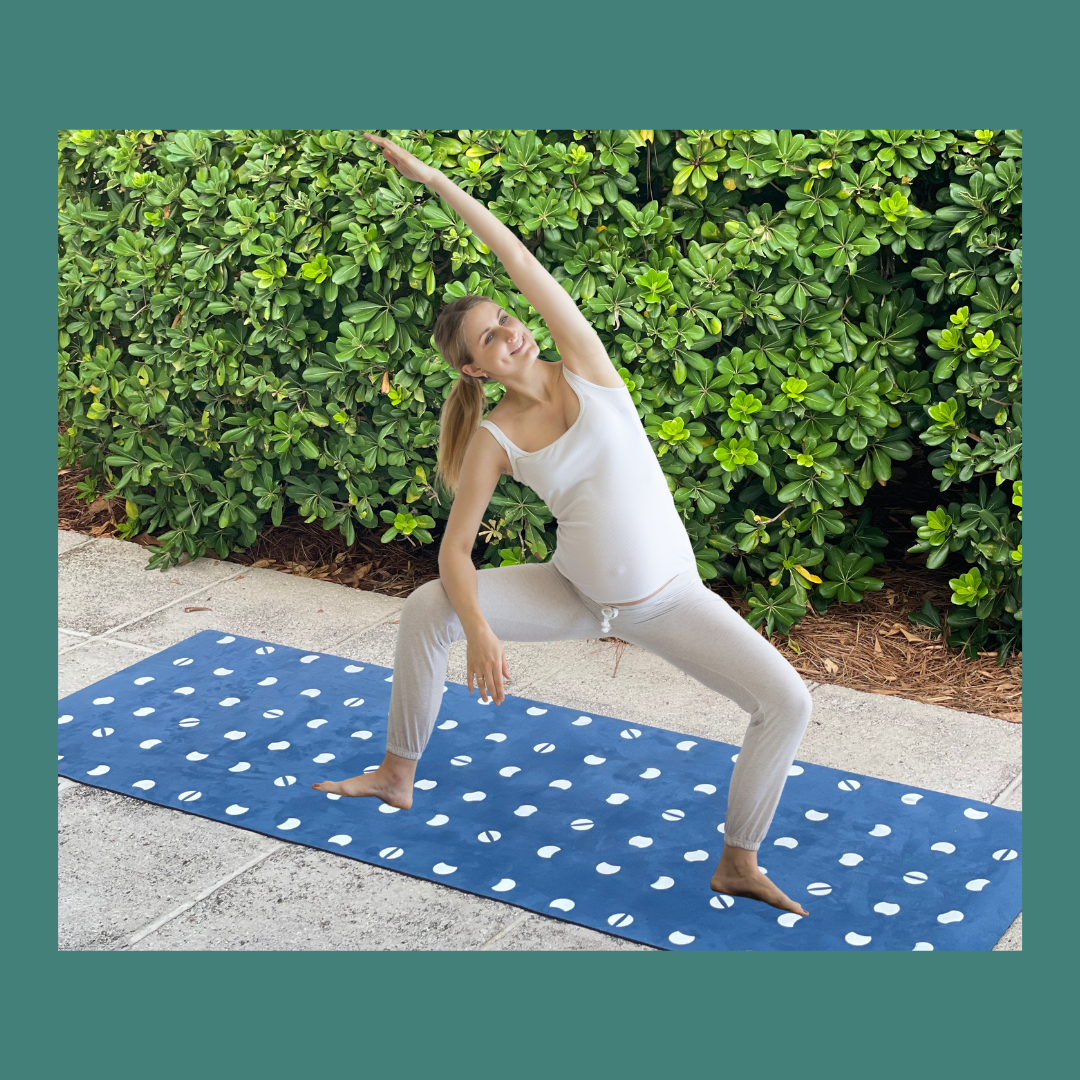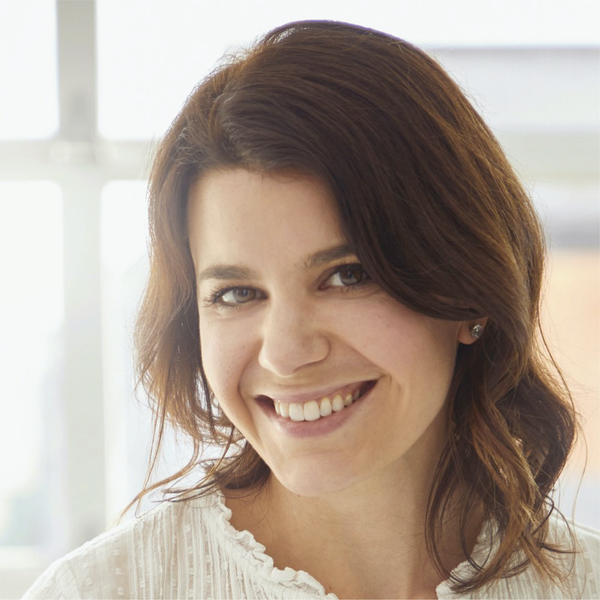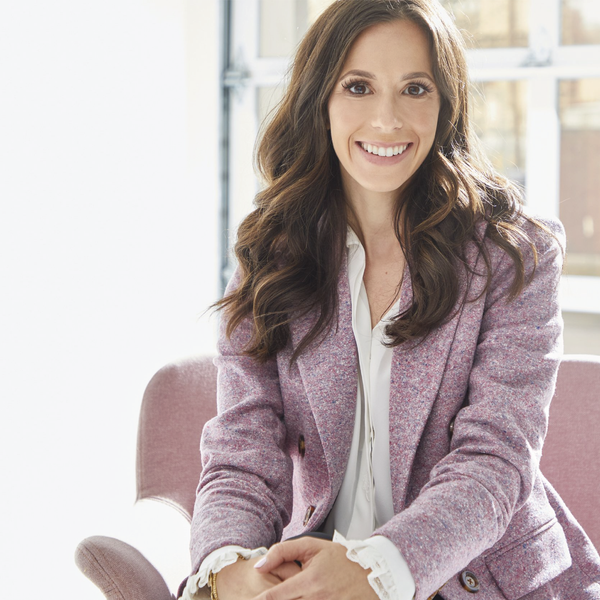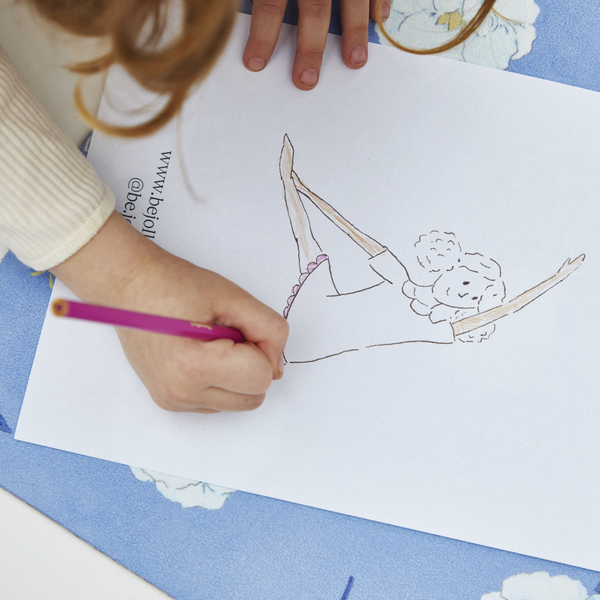Maternity Yoga

When we started Jollie, we had all different types of families and moms in mind, one in particular being pregnant mamas! If you have ever wondered how to have a safe maternity yoga practice, we have all the answers for you.
Which yoga poses should be avoided during pregnancy?
Almost all yoga poses are safe to do while pregnant, this just depends on your level of yoga and how your body feels. Some people who have a regular practice of them, prefer to do handstands while pregnant. However, those who are suffering from nausea or dizziness may prefer to stay closer to the ground, or not move at all. Anyone with nausea does not want to move quickly or have a lot of bent over movement. This is a great opportunity to practice breathing, yoga nidra or meditation.
In general, you want to avoid holding your breath, closed twists, deep forward bends, Inversions and lying flat on the back for an extended period of time
Two things that you can easily modify are chaturangas and savasana. For chaturangas, try coming to the knees during low plank, followed by child’s pose for updog and then a down dog. Savasana is easily modified with blocks, bolster and blankets or by lying on the side.
Any pose where there is no room for the belly should be avoided. For example, a deep forward fold with legs together is not only uncomfortable for you but the baby as well. Any pose with pressure on the tummy is not good for the baby or not sending oxygen to the baby (holding breath). After the belly starts to get bigger, poses like plank can put too much pressure on the lower back.
After the first trimester, there should be no pressure on the belly, no back bends and no closed twists. This is a great time to introduce self acceptance during meditation. While very exciting, the body is experiencing lots of changes and many women feel scared or don't want their bodies to change.
Alternatives and adjustments alternatives to inversions and backbends are chest openers on the wall or camel or half camel on the knees. If practicing camel, make sure the hips are pushing forward.
Another modification is wide leg forward fold with hands on a block or book and reach one arm into the sky. As you breathe, focus on moving the ribs away from the hips, relax the neck. Activate feet and legs.
What about the postpartum period? When can you start again with these poses?
This widely varies depending on c-section, preterm birth or vaginal delivery. Poses are only one part of yoga and pranayama (breathing) immediately after birth is widely encouraged. Practice this with your baby on your chest. Bhramari is a very popular technique using the vocals while breathing. Your baby will start to learn your sounds while you practice breath. The typical start time for exercise is 6 weeks post birth. However, if you have a c-section, you may want to avoid any wide hip openers or deep core work.
If starting to practice yoga after giving birth, focus on adding stabilization or some sort of support, like a wall or chair. Focus on the feet and feeling grounded again the work up to lengthening out the spine.
For women who suffer from DR, some simple core focus is the best place to start. This can include pulling your abdominals in when you laugh, not leaning into the counter while doing the dishes, practicing strong posture. Focus on opening the shoulders and hips. When you inhale, let the belly relax and when you exhale, hug in the ribs and abdomen. Knees into the chest or self hugs are great places to start as well.
Which yoga poses are essential during pregnancy?
Pelvic Tilts!!! Pre and post natal. If nothing else, practice this. The pelvic floor weakens with lack of movement. You want your pelvic floor to be tight not limp. You also don't want it overly tight and this is great for both.
Calf stretches. Many women experience discomfort during pregnancy because of alignment or posture while walking. Stretching out the calf muscles can alleviate tension in the legs and all the way up the back. Calf stretches can be practiced by rolling up a towel and placing it under the ball of your foot with your heel on the ground. You can place one hand on the wall next to you for support.
A lot of women shift tension into their shoulders while pregnant. A great move to alleviate this is shoulder stretches on the wall, shoulder shrugs or arm glides. Stand with your back against the wall, keep your arms pressing against the wall behind you and glide your arms overhead and then back down. Avoid pushing your chest out and try to keep your pelvis neutral.
Cat Cow is great for alleviating low back pressure, opening the chest and keeping the core engaged.
What are some of the classic prenatal yoga poses that you'll likely see in most classes?
One classic modification for prenatal yoga is standing with a wider stance. For example, chair pose should be done with fit hip width apart, not close together. This allows for more space for the belly and for your low back and hips to stretch as well. You also don't want to over compensate with opening the chest. This will strain the back. Try to maintain some core engagement (which is good) and keep a steady forward gaze. Chair pose is also a great way to practice stability and strength in the legs while pregnant. This turns on the quad muscles and inner thighs and you can focus on being grounded, feeling all points of your feet on the ground.
Another modification is using a chair or set of blocks. This will allow the ground to come closer to you and give you more stability. These can be used for a warrior 3, to modify your chaturanga or as an assist for a lunge.
A popular modification is dropping to your knees. Plank pose can be done with both knees on the ground and you can still feel some core engagement. This is also an alternative to a hovering plank. You can place one knee on the ground and extend the other long behind you.
You can also drop a knee in all of the warriors and side planks. This may be more necessary during later trimesters.
How are these poses modified from more standard poses you'd see in a regular class?
In a normal class, feet are together in child's pose, pelvis is neutral to keep the core engaged and the back muscles are turned on. Feet are firmly planted in the mat. Some teachers may focus on a chest opening here as well.
In a regular class, knees are lifted during plank and during hovering plank, one leg is straight (knee off the ground) and one foot is off the ground. And, in a regular class, side planks and warriors, both have legs off the ground.
In a regular class, instructors may call for a prayer twist or an easy twist. For prenatal, the key is not to close the belly or hips. An option is to drop the back knee and spread the legs out wider. You can place one hand on the ground and reach one hand up to the sky.
Why are these modifications recommended and when?
Keeping a wider stance in any pose will create more space in the pelvis. Dropping a knee while in lunge instead of doing a crescent lunge will keep strain off of the lower back and avoid overcompensation by thrusting out the chest. If you keep your legs closer together you will not have room for your belly and you will likely be uncomfortable.
What are some of our favorite modification poses?
Quad stretch - hand against the wall and push hips forward
Goddess pose - hands on the thighs, you can still drop in one shoulder
Butterfly - prop your hips off the ground and stretch your side body reaching over to one side - place the hand that is on the floor on a book or block to keep you lifted.
Happy Baby or half happy baby is great for opening hips. Your head should not be off the ground. If this occurs, reach for your calves, not your feet and keep your head and neck on the ground.
Core Work:
Opposite arm leg lifts - one knee on the ground, reach the other leg back and the opposite arm forward
Pelvic floor - contraction and release - lay on your back with knees bent and feet on the ground. Slowly tilt the pelvis up and down while you breathe. These can also be done with the back against the wall.



